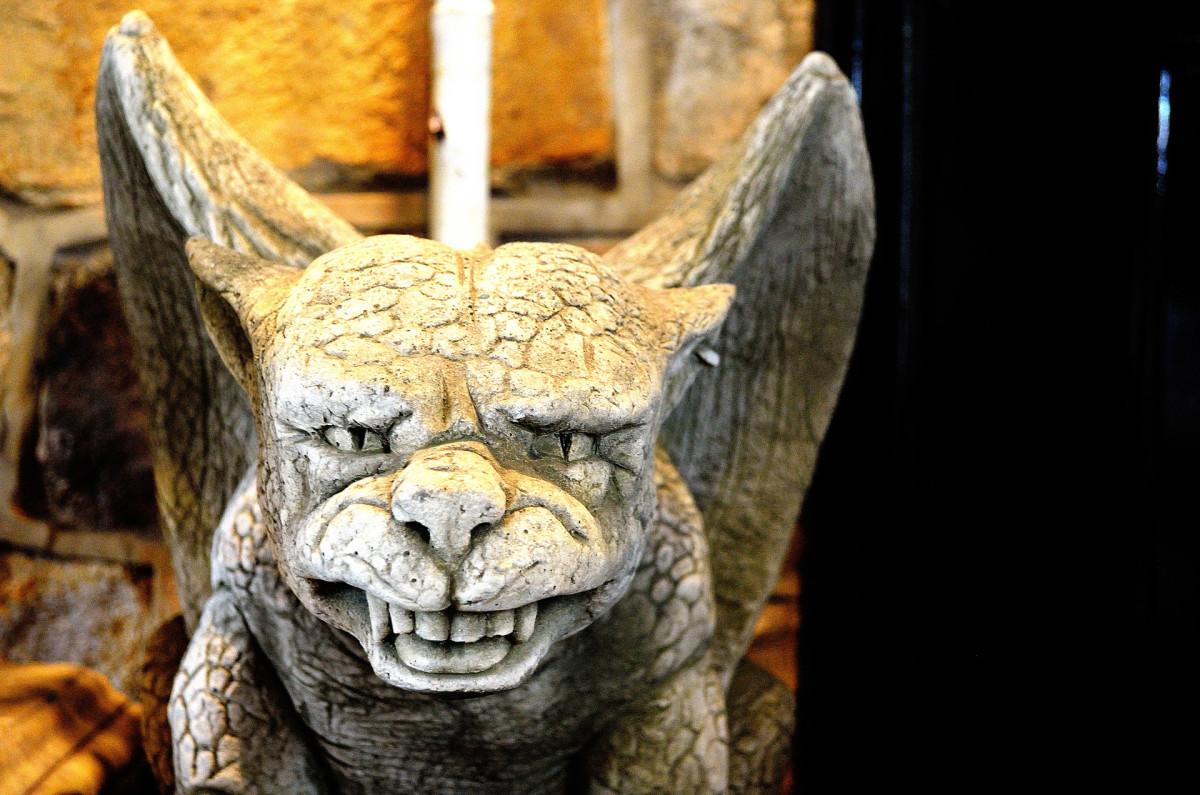Historical Significance and Symbolism: Gargoyle Statues

Gargoyle statues – Gargoyles have a rich history dating back to ancient times. They first emerged in ancient Greece and Rome, where they were used as decorative elements on temples and other buildings. These early gargoyles were often depicted as mythical creatures, such as griffins and dragons, and were believed to possess protective powers.
These gargoyle statues, with their grotesque features and menacing postures, are a reminder of a time when superstition and fear ruled. Today, they serve as decorative elements, adding a touch of the macabre to homes and gardens. If you’re looking for a unique way to incorporate these mythical creatures into your décor, consider a hobby lobby mirror featuring their likeness.
These mirrors, with their intricate carvings and antiqued finishes, will not only reflect your image but also transport you to a realm of gothic fantasy. As you gaze into its depths, you’ll feel the presence of these enigmatic guardians, watching over you from the shadows.
During the Middle Ages, gargoyles became increasingly popular in Europe, where they were used on cathedrals and other religious buildings. These gargoyles were often designed to be grotesque and fearsome, and were intended to ward off evil spirits and protect the building from harm.
The menacing gargoyle statues, with their grotesque features and watchful eyes, have long adorned the parapets of ancient cathedrals. While their presence may evoke a sense of foreboding, their architectural significance cannot be denied. These stone guardians have stood sentinel for centuries, weathering the storms of time.
But for those seeking a touch of warmth and comfort in their living spaces, the juxtaposition of these formidable figures with the soft, inviting hues of pink rugs for living room creates an unexpected yet harmonious blend. As the sunlight streams through stained-glass windows, casting ethereal patterns upon the floor, the gargoyles seem to soften their gaze, becoming silent witnesses to the gentle beauty that surrounds them.
Cultural and Religious Influences
The design and placement of gargoyles were influenced by a variety of cultural and religious factors. In some cultures, gargoyles were seen as symbols of fertility, while in others they were seen as protectors against evil. The placement of gargoyles on buildings was often dictated by religious beliefs, with some gargoyles being placed on the corners of buildings to protect against evil spirits and others being placed on the roofs of buildings to ward off lightning.
Architectural Styles and Designs

Gargoyles have been a prominent architectural feature for centuries, gracing buildings in a wide range of architectural styles. From the soaring heights of Gothic cathedrals to the rustic charm of Romanesque churches, these grotesque creatures have adorned facades and spires, adding an element of mystery and intrigue.
Gothic Architecture
The Gothic period witnessed the golden age of gargoyle design. Gothic gargoyles were typically elaborate and highly stylized, with intricate carvings depicting a vast array of mythical beasts, grotesque faces, and fantastical creatures. These gargoyles often served a practical purpose, channeling rainwater away from the building’s walls through their open mouths. Their exaggerated forms and menacing expressions added a sense of drama and awe to the already imposing Gothic structures.
Romanesque Architecture, Gargoyle statues
Romanesque gargoyles were more subdued in their design, reflecting the simpler and more functional nature of Romanesque architecture. These gargoyles were typically carved from stone and featured simpler shapes, such as lions, dragons, or human heads. While they may not have possessed the same level of detail as their Gothic counterparts, Romanesque gargoyles still added a touch of whimsy and character to these sturdy and impressive buildings.
Techniques and Materials
Gargoyles were typically created using a combination of carving, molding, and casting techniques. Stone was the most common material used, but gargoyles were also made from wood, metal, and even ceramics. The process of creating a gargoyle involved careful planning and execution, with skilled craftsmen meticulously shaping and detailing each creature to achieve the desired effect.
Examples and Case Studies

Gargoyles have been a prominent feature in architecture for centuries, with iconic examples found worldwide. These statues have played a significant role in cultural heritage and urban landscapes, showcasing the artistic and architectural prowess of their time.
Notable gargoyles include those adorning the Notre Dame Cathedral in Paris, known for their intricate details and grotesque expressions. The Sagrada Familia in Barcelona also boasts an array of gargoyles, designed by Antoni Gaudí to reflect the natural world and Catalan culture.
Restoration and Preservation
Preserving gargoyles is crucial for maintaining their historical and architectural value. Restoration projects often involve careful cleaning, repair of damaged elements, and repointing of joints to prevent water infiltration. One notable case study is the restoration of the gargoyles on the Cologne Cathedral, where experts used laser cleaning and stone consolidation techniques to preserve the intricate carvings.
Impact on Urban Landscapes
Gargoyles have a profound impact on urban landscapes, adding a sense of mystery and grandeur to buildings. They often serve as focal points, drawing attention to architectural details and enhancing the overall aesthetic appeal of the structure. In cities like Prague and Vienna, gargoyles have become synonymous with the urban fabric, contributing to the cultural identity and charm of these historic centers.